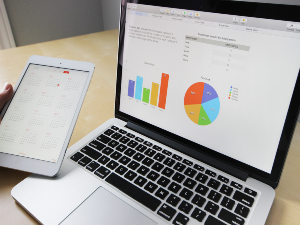 Data visualization is both a tool and an art that businesses can use to communicate goals, analytics, and other information in a simple but optical presentation. Humans naturally seek patterns within data sets. Thus, visual data representations that include color and intuitive measurements with fewer words are easier for readers to digest and visualize
Data visualization is both a tool and an art that businesses can use to communicate goals, analytics, and other information in a simple but optical presentation. Humans naturally seek patterns within data sets. Thus, visual data representations that include color and intuitive measurements with fewer words are easier for readers to digest and visualize
Businesses can harness the power of data visualization to improve data-driven decision-making. Here are tips on integrating data visualization tools.
What Data Visualization Entails
Data visualization refers to the method of translating information into graphics. These graphics might include:
- Graphs
- Charts
- Vector images
- Videos
- Gifs
Visualized data makes it easier for the viewer to draw conclusions from the data.
When someone looks at a long list of profit percentages, they have to mentally arrange the information to make sense of whether the business increased or decreased its profits over the year. They must check and double-check their math to ensure they made the correct calculations. If they could visualize the data with a graphic or video, they’d immediately understand that the business experienced an uptick in profits without calculating.
Examples of Data Visualization Tools
Although visualized data allows audiences to intuitively grasp patterns within information clusters, this hinges on creating solid data graphics. Fortunately, you don’t need a graphic design degree to generate engaging graphics. You can use one of the many digital tools designed specifically for visualizing data.
Among the most popular tools are:
- Google Charts
- Infogram
- Tableau
- Qlik
- Wrapper
- ChartBlocks
Some options require subscription purchases, while others have free features.
How to Craft Engaging Examples of Data Visualization
To make engaging data visualization graphics, collect the information you want to share with a larger audience. Examples of such data may include:
- Profits by franchise location
- Social media analytics for an ad campaign
- Information about customer satisfaction from survey collections
- Completion time per project after implementing a new software
Then, choose how you want to present this data. You should use an intuitive design that the viewer can easily translate.
For example, a pie chart to demonstrate the profits for each franchise location might not be the best choice for that set of data. However, a simple bar graph for each location’s current and past earnings would work well to display progress and earnings by location.
Making the Most of Data Visualization to Improve Decision-making
One of data visualization’s most important contributions is its ability to inform and enhance decision-making. Going back to the example of the franchise locations, if company officers need to decide whether each location’s current management sufficiently handles the location to inform staffing decisions.
With a visual graph of each location’s profits, the company officers can identify and measure this year’s profits against last year’s. If two locations failed to meet or exceed the previous year’s profits, the officers could visit those locations for further review. In this case, data visualization tools simplified the complex data to help management decide on the next steps to meet the company objective of increasing profits.





